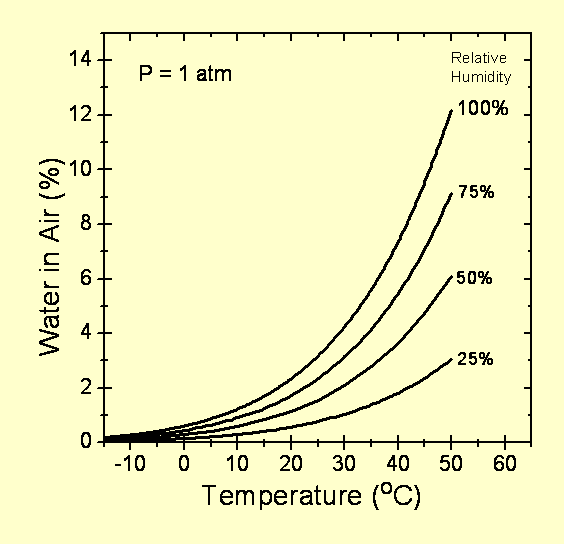
Here is a graph showing the molar fraction of air which is water for various temperatures and relative humidities, assuming the total air pressure is 1 atm. For a given relative humidity, the total amount of water in the air does not change with pressure, but the quantity of the remaining components (mostly nitrogen and oxygen) will change. This comes directly from the definition of relative humidity, and is not some mystereous property of water. Thus, for example, if the atmospsheric pressure is 0.95 atm, rather than 1.00 atm, the percentage values shown should be multiplied by a factor of 1.00/0.95 = 1.05.
The values used in the graphs are computed using the saturation vapor pressure of water at various temperatures obtained from the reference below.

Reference: "Handbook of Chemistry and Physics, 60th edition" CRC Press.
Questions/Comments to: suits@mtu.edu
There are no pop-ups or ads of any kind on these pages. If you are seeing them, they are being added by a third party without the consent of the author.
Back to Speed of Sound in Air